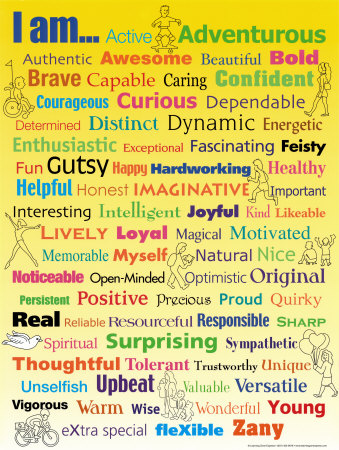 |
 |
 |
 |
Teaching Literature
CHARACTERS.
Adapted
Who are they? What do you know about them? How can you describe them physically and morally? Which character do you like the most?Memorable characters come alive for us while we read. They live on the page and in our hearts and minds. We cannot forget them. Yet, they are fictional; they don't really exist.
We should be alert to characters in the same way we are when we meet someone.
We Must :
- Observe their actions
- Listen closely to what they say and how they say it
- Notice how they relate to other characters and how other characters respond to them
- Look for clues as to their purpose and significance in the storyCharacters are either major or minor and either static (unchanging) or dynamic (changing).
In most pieces of fiction, one or two characters predominate and the action revolves around them ; they are called the major characters , and among them lies the central character or the protagonist with whom the reader associates; s/he is the individual who experiences the greatest struggles or conflicts.
The essential nature of major characters, and particularly that of the protagonist, is often emphasized through the use of character foils.
A character foil is any character whose nature, actions, or motivations serve to emphasize or highlight the nature, actions, or motivations of another character.
The antagonist: main character (person, animal, climate, etc.) that creates the conflicts with the protagonist.
The hero: once-used reference to character with wholly-positive qualities.
The villain: once-used reference to character with wholly-negative qualities.
“Static characters”: those who do not have the ability to change their beliefs or behaviors.
“Dynamic Characters”: those who, because of experiences and events, have the ability to change their beliefs or behaviors, though they do not have to.
Minor characters: they often play an important role in stories, a role that should not be overlooked because it may serve as an important key to discovering the themes that the novel is exploring.
Readers can learn about characters in many ways, including:
Physical traits, Dialogue, Actions, Attire, Opinions, Points of viewThere are no limits on the types of characters who can inhabit a story: male or female, rich or poor, young or old, prince or pauper. What is important is that the characters in a story all have the same set of emotions as the reader: happiness, sorrow, disappointment, pain, joy, and love.
As Nathaniel Hawthorne said, "Blessed are all the emotions be they dark or bright." In emotions lie the motivations of the characters who drive the story.
The nature of characters can be revealed:
- Directly : the author tells us straight out or has one of the other characters tell us directly what a certain character is like. This is obviously the clearest and most economical means of revealing character, yet, rarely the most effective.
- Indirectly: the author suggests what a character is like through what he thinks, says, does, fails do, or chooses not to do. This is usually the more convincing method of character presentation and challenges the reader to infer what a character is like.
To determine the nature of a character we should consider the following questions:
1-How does the character behave? What does the character choose to do, choose not to do,
or fail to do?
2- What motivates a character?
3- If a character changes, why? If the protagonist is essentially the same at the end of the story as at the beginning even though circumstances have changed, what aspect of the protagonist's character determined the direction of the protagonist's life?
4- Who or what are the antagonists (the forces seeking to prevent the protagonist from achieving his or her goal)? How does the protagonist deal with the antagonists?
5- What internal conflicts, if any, does the protagonist experience?
Character’s Personality Traits :
1.) OUTGOING 19.) FORCEFUL
2.) ORGANIZED 20.) IMPULSIVE
3.) HONEST 21.) CALM / QUIET
4.) UNDERSTANDING 22.) DETERMINED
5.) TALKATIVE 23.) DEMANDING
6.) AGGRESSIVE 24.) NEAT
7.) SENSITIVE 25.) PERSUASIVE
8.) CONVENTIONAL 26.) ALERT
9.) BOLD 27.) CHARISMATIC
10.) CHARMING 28.) SLY
11.) CAREFUL 29.) MANIPULATIVE
12.) CONVINCING 30.) PERCEPTIVE
13.) SOCIABLE 31.) INTELLIGENT
14.) RELAXED 32.) SELF-CONTROLLED
15.) CAUTIOUS 33.) COURAGEOUS
16.) PERSISTENT 34.) DEXTEROUS (Skillful in Handling Things)
17.) COMPETITIVE 35.) ENERGETIC
18.) PLEASANT 36.) STRONG/WEAK-WILLED …

Page Created on September 8, 1998
Last updated on April 1, 2009
Copyright ©
1998/2009 by Nada Salem Abisamra
https://www.nadasisland.com/om-teaching.html#7
Nada's
University Projects || Nada's
Online Materials
Second Language
Acquisition || Teaching
Culture || Teaching
Reading || Teaching
Writing || Teaching
Idioms
Affect in Language
Learning: Motivation
"Error
Analysis: Arabic Speakers' English Writings"

Back to Nada's ESL Island